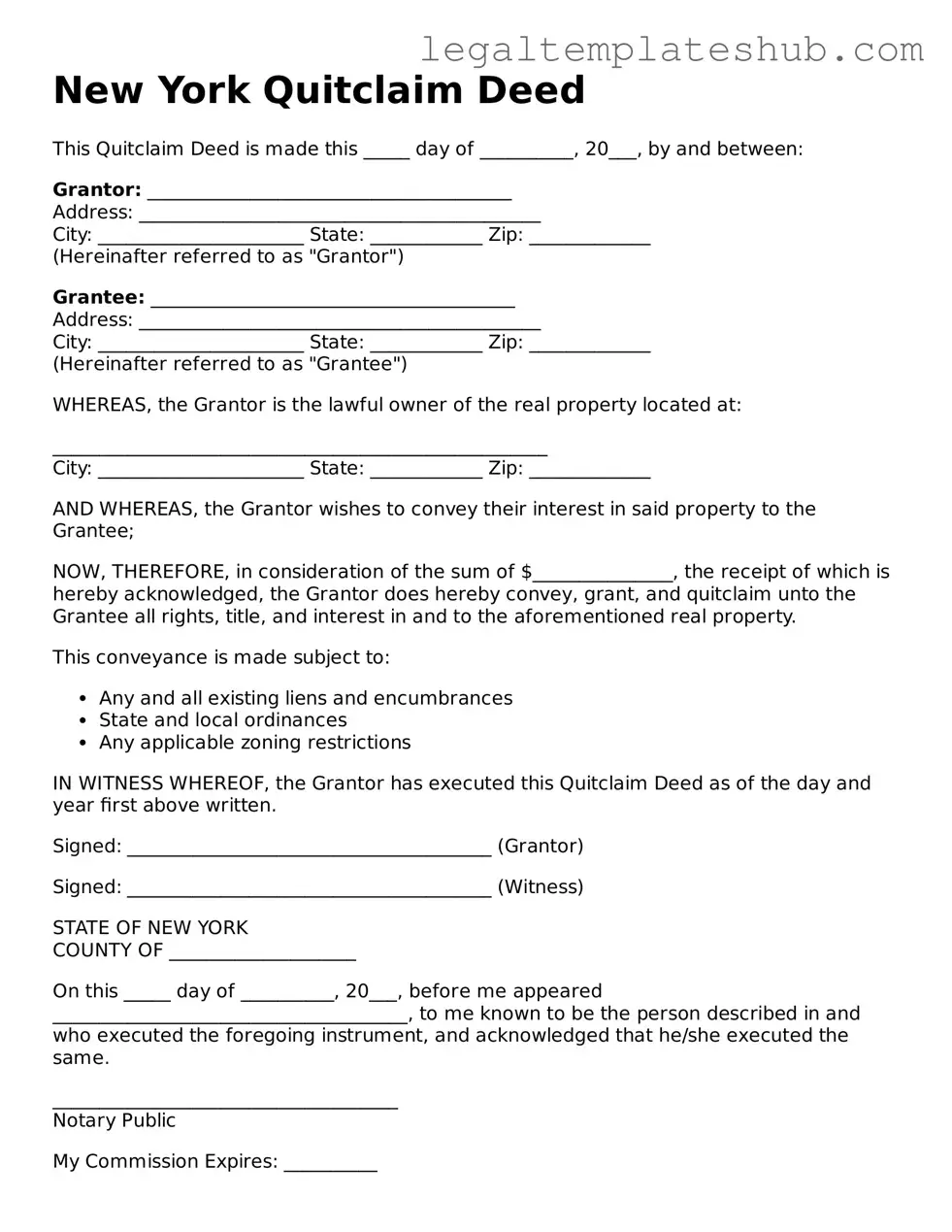Instructions on Filling in New York Quitclaim Deed
After obtaining the New York Quitclaim Deed form, it is important to fill it out accurately to ensure a smooth transfer of property ownership. Each section of the form must be completed with care, as any errors could lead to delays or complications in the process.
- Gather Necessary Information: Collect the names and addresses of both the grantor (the person transferring the property) and the grantee (the person receiving the property).
- Property Description: Write a clear and accurate description of the property being transferred. This should include the property’s address and any additional identifying information, such as the lot number or block number.
- Fill Out the Form: Start with the title section at the top of the form. Clearly state that it is a Quitclaim Deed. Then, enter the grantor’s name and address, followed by the grantee’s name and address.
- Consideration: Indicate the consideration, or payment, for the property transfer. If no payment is involved, you can state “for love and affection” or “nominal consideration.”
- Signatures: The grantor must sign the document in the presence of a notary public. Ensure that the signature matches the name as it appears on the form.
- Notarization: The notary public will complete the notarization section of the form, confirming the identity of the grantor and witnessing the signature.
- Record the Deed: After completing the form, take it to the local county clerk's office to have it recorded. This step is essential to make the transfer official.
By following these steps, the Quitclaim Deed will be properly filled out and ready for recording, facilitating the transfer of property ownership in New York.
